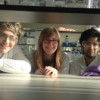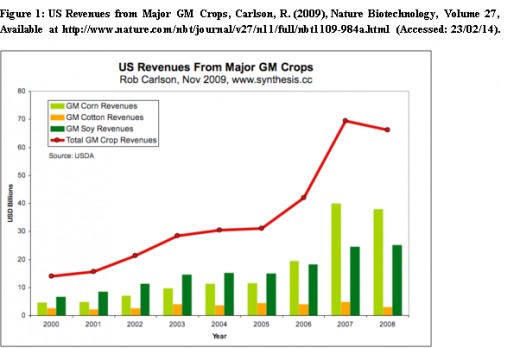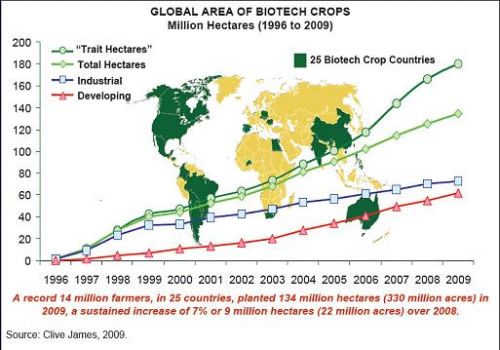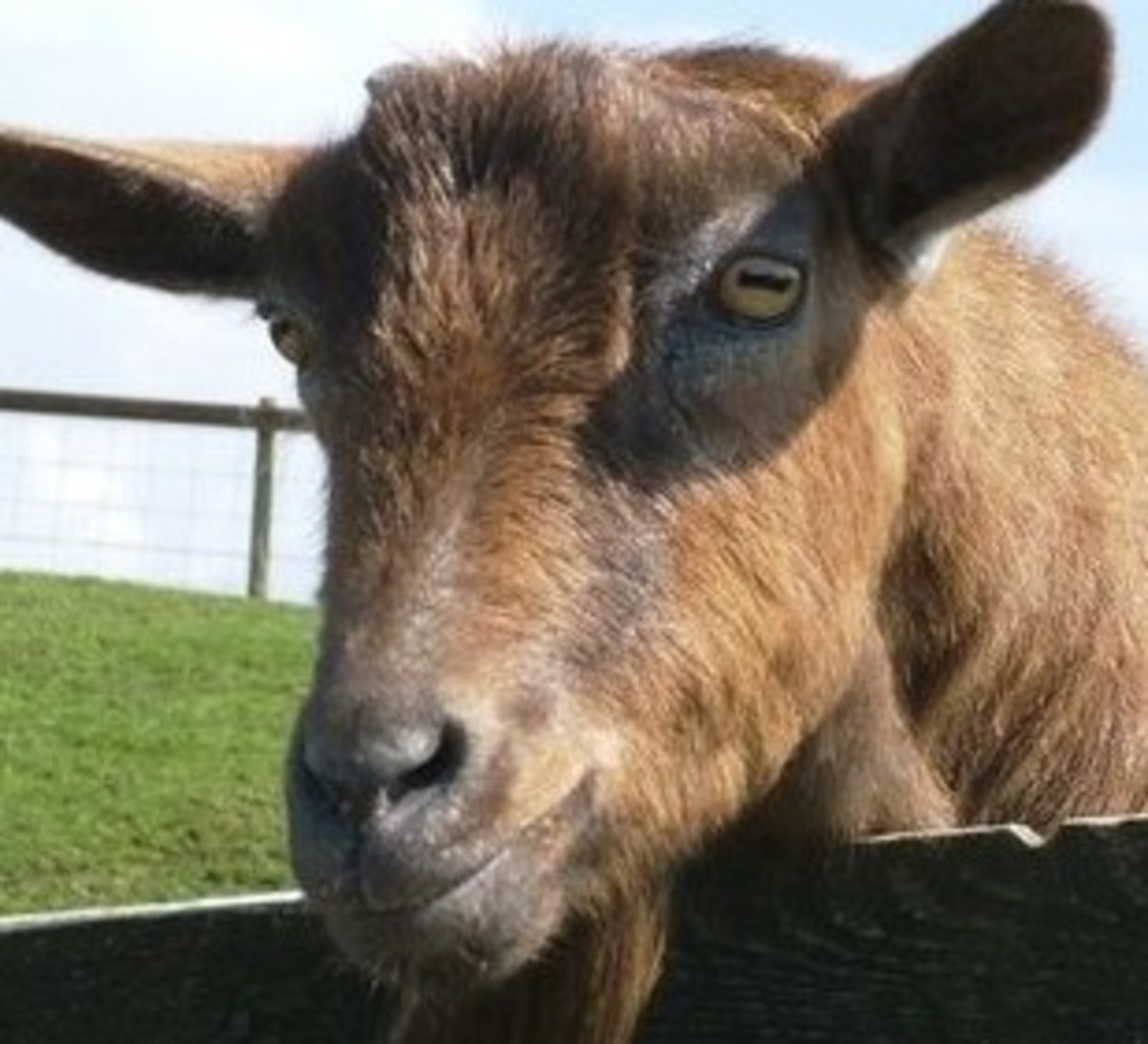Biotechnology and Agriculture
Figure 1 US Revenues from Major GM Crops
Click thumbnail to view full-size
Figure 2: Global Area of Biotech Crops.
Click thumbnail to view full-size
The Use and Success of Genetic Engineering in Crop Modification
The Use of Genetic Engineering in Crop Modification
Herbicide Resistance
Genetic engineering can modify crops to be tolerant against herbicides such as the broad spectrum herbicide Glyphosphate, which is marketed as Roundup. It affects the shikimate pathway that leads to protein synthesis by knocking out the key protein EPSPS (5-enolpyruvyl-shikimate-3-phosphate synthase) (Dun et al., 2007). But some bacteria make a different form of EPSPS which can be put in crops making them resistant to Roundup, the ‘Roundup Ready gene’. This has been done with soybean, rapeseed and, later, maize. To demonstrate the widespread use of this technology, Lapegna (2012) stated that 90% of soybeans grown in Argentina 2002 were genetically modified (GM).
An advantage of this technology is that it makes it easier to suppress weeds, because it can be spread at any time, whenever weeds grow. It can also help improve profits, since it causes a yield increase, as was shown by Cao et al. (2014) in rice. However it could be argued that the profit increase is hindered by farmers having to buy the more expensive Monsanto seeds. They are forced into doing this because the farmers sign a contract to keep buying from Monsanto and this is regulated. Even though the patent for the seeds has expired, farmers can still not buy the seeds without the Roundup, meaning that they are still being controlled.
Insect Resistance
GM can also be done for the prevalence of other simple traits, such as insect resistance. Bacillus thuringiensis (Bt) is a gene that produces crystalline protein (Cry). Crops can be modified to have short DNA sequences from Bt so they produce Cry. This is done by joining the Cry gene with the cauliflower promoter Cauliflower Mosaic Virus (CMV) 35s. This is then put into a crop (e.g. cotton, soy, oil seed rape or maize), for it to be expressed in all tissues. When this is expressed in plant tissues and insects consume it, the Cry becomes active from within the insects. The protein has two paths of mechanism: signalling the insect to stop eating, resulting in starvation and it causes the gut lining to get attacked, meaning the contents of the gut enters the body, which goes into septic shock. An example of this process was the use of Bt cotton by Monsanto to stop the major pest Cotton Boll Weevil (Anthonomus grandis) in India in the late 1990s. Since then, it has been used in many different countries, as outlined by Pray and Ma (2001).
This process means only a small amount of the plant gets consumed, since it has such an efficient way of causing insect mortality. Also, Cry is not toxic to other animals (including humans), since it is not transformed into the active form within them (Lopez et al., 2009). GM crop for insect resistance is an advantageous thing to do from an environmental perspective. The alternative is chemical insecticide, which is highly toxic to a wide range of species, and can accumulate in food chains, causing great harm to the uppermost carnivores.
Secondary GM Generation
Secondary generation traits are those that affect the crop product itself, rather than its growth or other miscellaneous factors, such as increased quality or yield. There is customer appeal for these crops, since the benefits of them outweigh any risks to human health, the crop itself or the environment.
These crops are developed by the public sector and research institutes because it is done for the good of the people, rather than profit. This is unlike first generation in GM, where companies controlled the crops for profit, leading to negative associations with the crops themselves. This was especially a problem because these companies were originally based on chemicals, tying them to problems with pollution and toxicity.
An example of a secondary GM crop is that of the removal of the immunodominant allergen from soybean (Herman et al., 2003). A further example is that of golden rice that has been modified to produce vitamin A by the addition of three genes meaning it can make ß-carotene (Paine et al., 2005). This is required because in some countries they rely on certain foods (such as white rice) as a staple that do not contain all the necessary macro and micronutrients for survival. A deficiency of vitamin A can cause: night blindness, neurological problems and permanent blindness, especially in children.
The Success of Genetic Engineering in Crop Modification
The use of GM is popular in most areas of the world, with USA, Brazil, Argentina, Canada, South Africa, India and China being big producers. However the EU has shunned the use of GM crops due to the public’s perception of the risks of a technology compared to their perception of the benefits of a technology (the risk : benefit hypothesis) (EUROPA, 2011). If the media portray something as having a risk but do not see an immediate positive benefit for themselves, they will oppose it. This means that only Spain in the EU grows GM crops, in the form of Bt maize.
It could be argued that GM for insect resistance was successful but only due to pirating of the technology. This is because when Monsanto first introduced Bt cotton in India in the late 1990s, it was too expensive for the farmers to buy. Instead, farmers took the risk that there would be no pests that year. However, when the Bt crop was pirated, crossed with an Indian crop and sold cheaply, making it available for use. Since this could not be regulated by Monsanto, the company had lost the market and were forced to lower the price.
It could be said that the success of GM is limited because 95% of GM crops are: cotton, rapeseed, soy and maize. This means that there is a low biodiversity of GM crops, as shown by Figure 1 (Carlson, 2009). Furthermore, there is a low diversity of GM traits, with 99% of GM crops being modified for herbicide tolerance and insect resistance. This shows the restricted technology and application of first generation GM to these crops. However, developments such as golden rice provide such great benefits to the public that more research is currently being developed. It could also be said, that regardless of the biodiversity of the GM crops being grown, they are being grown successfully. An illustration of this is found in Figure 2, which shows the income generated in America because of genetic modification (Clive, 2009).
The Range of Uses of Modern Biotechnology in Livestock Modification
The development of modern biotechnology is required to meet the demands of humans today. Within agriculture, this can be in terms of increasing crop yields due to pests, improving the quality of foods produced or providing food for the growing human population. The main ranges this is done through are: cloning, growth hormones, genetic modification and intensive management.
Cloning
Cloning is a normal and natural process, as seen in identical twins (Maimets and Lõuk, 2014). Cloning by humans in plants has been a normal part of breeding for years, through the use of totipotent cultivates. It is a more difficult procedure in animals, however, due to the highly diversified and specialised nature of animals. An example of the additional development required was shown by the success rates of sheep cloning. Eventually this lead to the creation of Dolly the sheep, but many defects and high fatality rates were found before this was achieved (Einsiedel et al., 2002). This was done by taking differentiated embryonic stem cells and making them become differentiated. A nucleus was removed from a somatic cell and placed into a denucleased egg cell, along with hormones.
Today, cloning has progressed to have value to consumers on more personal levels. An example of this is that of copycat companies, such as the My Friend Again dog cloning services (2014). Pets can be cloned so their owners will not miss them as much when they pass on, since they have distinctly shorter lives than their owners. An issue with this, though, is that there are still defects, for example the characteristics of the cloned pet may be different from those of the previous animal.
Growth Hormones
Growth hormones have been used to increase the yield of bovine milk production in America. An example of these hormones is the recombinant bovine (rBST). If milk produced by rBST-treated cattle is consumed by humans, it increases the blood level of insulin-like growth hormone (IGF-1), which may have unknown side effects. It was believed that IGF-1 increased the risk colon cancer in humans (Barone et al., 2014). Even though this has now been disproved, research could show new developments. This is demonstrated by how somatotropin is illegal in Europe due to health risks to both the cows and humans
Another problem is that cows given rBST are more likely to develop udder infections (mastitis). This causes issues because the cows are given antibiotics to prevent the diseases which affect animals and humans (such as zoonosis like avian flu) and are more likely to occur. This means that because cows are already given antibiotics with their feed, this could potentially promote the concern of antibiotic-resistant bacteria, compounded by the rigorous selection process for resistance (Lamb, 2014).
Genetic Modification
Growth hormones can also be added in the form of genetic modification. In 1982 the first transgenic mice were made. The mice were genetically modified to grow large due to the addition of a rat growth hormone gene that can be regulated by dietary zinc. This process meant that when the mice were fed zinc, they grew to great sizes, demonstrating that GM works and generates visible phenotypic changes (Palmiter and Brinster, 1982).
An example of genetic modification with potential for the future is that the fats from milk can be modified to make them more like oil fats, for example by decreasing the cholesterol and fat deposits and increasing the protein levels, double bonds and unsaturated fats (Bauman et al., 2006). It could potentially be argued that milk can be made healthier in these ways by allowing cattle to feed naturally on grass. This would give the animals and so their produce, an increase in unsaturated fats. K-caesin genes B and K can be hooked to promoters e.g. ß lactoglobulin from cattle which results in the cows utilising all their consumed carbon. This results in the production of high protein, low fat milk. This has not yet been developed but research into this area is continuing.
Developments are not just occurring in the area of milk but in other foodstuffs too. Salmon now needs to be farmed because they have been overfished in the seas but they are a good source of omega oils and people are advised to have two portions of fish a week. Farmed salmon take 3 years before reaching optimum maturity for the commercial rate. This is an issue because it means large amounts of food are required before the salmon can be sold, which means a lot of wastage and money. Also, these salmon have to be protected from diseases, which may mean the introduction of generic antibiotics, which can result in antibiotic-resistant bacteria and expense to purchase the drugs. Aqua Advantage are an American company that placed a growth hormone gene from Chinook salmon (Oncorhynchus tshawytscha), which are difficult to farm but grow quickly, and placed it in Atlantic salmon (Salmo salar), which are easily domesticated and farmed (Foxx, 2010). This resulted in a larger fish through put, feeding more people and providing greater profits. These advantages encouraged the approval of rearing salmon in this method in a controlled environment in America in 2012 and Canada 2013.
A danger involved with this methodology of salmon farming and modification is that the fish could get out of the enclosures and breed with wild fish. Regardless it could be argued that this would have no significant effects on the surrounding environment because these hybrid salmon would be maladaptive and starve, because they would not be able to obtain the amount of food needed to maintain such fast growth. Even if there was a likelihood of survival, the modified individuals could also be made sterile so any escapades could be easily controlled and the modification would progress no further.
Intensive Management
Salmon farming is one example of intensive livestock management but traditional livestock are also a part of this process. The use of feedlots is a form of intensive management that began in the 20th century. Livestock were kept inside, with few outside visits. Feedlots were beneficial to farmers because it meant they were no longer reliant on the weather and seasonal variation in the weather patterns to generate an income. When livestock lived outside and there was high precipitation, the grass would be affected, leading to decreased meat yield that year because it would be more difficult for the animals to feed. But the animals in feedlots are fed surplus crops, and in shortages the crops were imported from other countries due to globalisation. These crops, such as maize and soybean, are a good source of protein, oil and starch. Despite this assumed nutritional value, this diet may have been deficient in macronutrients because it was without the variation that a traditional less restricted grass diet would have. This was supported by a study completed by Elswyk and McNeill (2014), which showed that American cattle who were fed with grass rather than grain had 1.6-4.1g/100g lower beef fat and 1.8g less/100g monounsaturated fatty acid. Despite this, supplements and vitamins can be added to the grain in a uniform way, to ensure all the animals get the nutrients they require and no one individual is more deficient than another. But sometimes these can cause problems in themselves, since they can be artificial (Lamb, 2014).
The Likely Impacts of Biotechnological Methods, Solving Global Food Availability and My Own Opinion of Ethical Justification
The Impacts of Biotechnology Methods
It could be said that a negative impact of biotechnological methods is that of the accidental consequences of gene transfer between plants and the irreversible or uncontrollable ‘escape’ of genes into neighbouring wild plants by pollen. This could potentially cause pests or weeds that could acquire resistance to herbicides, known as ‘superweeds’ (Alder, 2011). An example of this is the crossing of rape seed (Brassica napusand) and a persistent annual weed, charlock (Sinapis arvensis), which forms a herbicide-tolerant hybrid. Regardless, this first generation has low fitness rates because they have crop characteristics that decrease the survivability, for example they are not as weedy or persistent. This means that the hybrids are unable to compete with the weeds in the natural environment, unless there is a form of selective pressure. A case of such a pressure would be the continuous application of weed killer, but this would also not be adequate to promote the survival of the hybrid because farmers usually use more than one type of weed killer to manage the ecosystem, resulting in both wild and hybrid organisms being killed. Therefore, this superweed claim could be interpreted as an exaggeration. Furthermore GM crops have been grown since 1996 and there has been no sudden proliferation of resistant weeds, meaning that it is not a large enough risk to ban the technology.
Another impact of biotechnology is that of antibiotic resistance. The antibiotic resistance gene is used as a selectable marker. When the GM crops containing the ampicillin are consumed, it would interact with any pathogenic strains of E. coli in the gut (e.g. from uncooked meat). This would result in an illness that is resistant to penicillin. However, there are lots of antibiotics that can be used and the bacteria would only be resistant to penicillin (Herrero et al., 1990). Yet it could still be said that it would take doctors approximately four days to recognise the resistance, during which time the patient’s condition could deteriorate. Regardless of these severe implications, the likelihood of them actually occurring is very low. The gut is highly efficient at segmenting DNA into fragments, meaning that it would be very unlikely for that specific DNA segment to be preserved. Additionally bacteria is able to become antibiotic resistant naturally on a day-to-day basis, without the use of biotechnology.
Biotechnology and Solving Global Food Availability
The United Nations Environment Programme reports that soil degradation could cause severe famine in 2032 (Mason, 2003). The only feasible way of providing enough food for the population size, which seems to be continuing to grow, is through the development and usage of biotechnology. A similar prediction was made in 1968. Ehrlich (1968) proposed that due to the great population expansion and inability to gather the resources required to feed these people, the human carrying capacity limit had been reached. Due to the progress completed by Borlaug and the Green Revolution these predications did not come true and the population did not starve, due to technologies increasing the yields of the studied crops.
It could be said that biotechnologies are able to solve global food availability because of the increased yields that seem to result from them. An example of this is when Borlaug’s wheat theories were applied to rice by Beachell and the International Rice Research Institute (IRRI) in the 1970s. They screened and crossed different varieties of rice to form miracle rice (IR8) from Peta and Dee Geo Woo Gen. It was coupled with a spontaneous mutation in the sd1 gene, altering the activity of gibberellin, reducing stem elongation (Lamb, 2013). The resulting crop was a semi-dwarf with thick stems and high yields, but it also resulted in higher yields because of less lodging due to precipitation and weather. This miracle rice caused the worldwide rice production to double from 257 to 600Mt from 1966 to 2000.
It is not just crossing different species of crops with the correct mutations that results in higher yield but also the use of other technologies such as pesticide resistance. Use of GM for pesticide resistance results in increased yields because less of the crop is lost to the pests but also because less biocides are required. Similarly, genetic modification to make crops hardier and more likely to survive disease also increases yield. Ngailo et al., (2013) explored the potential of GM sweet potatoes to be resistant to Sweet Potato Virus Disease. But to make this possible, genetic modification has to be done in combination with biotechnology and mutation breeding. This is an issue because it makes the sweet potato breeding challenging (so it cannot be done by normal farmers) and expensive, making it difficult to achieve in developing countries.
Regardless of the uses of GM crops, it could be argued that some biotechnology reduces the yields of crop. For example, semi-dwarf crop varieties require large amount of fertilisers to be able to grow adequately. Nevertheless, these crops are able to mature faster, meaning that they can be grown more intensively, feeding a greater number of people.
Another important aspect of food availability is not the quantity of food but its variation. Verma et al. (2011) said how crops can be genetically modified to contain nutrients lacking from the diets of the people who consume them. In developing countries, particular nutrients may be lacking from the diets of people, making them vulnerable to malnutrition. An example of modification of rice to provide these missing nutrients is that of Golden Rice. This GM crop has three genes added, allowing it to make ß-carotene to prevent vitamin A deficiency, which causes childhood blindness e.g. 14 million children under 5 (Busie et al., 2006). This demonstrates the continuous need for improvement and development of crop improvement, both in terms of yield and quality, and how successful this biotechnology is in improving global food availability.
My Opinion on the Ethics of Biotechnology
My opinion of biotechnology is that it is required to allow the growing human population to be fed. It has been used for thousands of years with a variety of methods from selective breeding to genetic modification, and any issues it may have caused far outweighs the benefits. I do understand, however, that science is unable to be done without critical analysis in terms of morality and ethics; it is important for this scrutiny to continue to ensure the benefits of biotechnology are balanced. It could be argued that there will always be an imbalance because there is always a struggle between human welfare, animal welfare and the environment.
A human ethical issue encompasses the damage that biotechnology could do to humans, especially to human health. There are two main different branches of animal ethics. It is important to consider animal welfare because any modifications done to human benefits may cause them harm, for example some broiler chickens grow too fast for their legs to develop to support them. The second branch concerned with animals is that of animal rights and whether humans have the right to alter other organisms to our own wills. Although it is clear that animals can suffer side effects due to biotechnology, they can also benefit from it, including disease resistance.
My one negative viewpoint on biotechnology is that of how biotechnology is funded. I think it is highly important that profitability is not one of the main driving factors of the development of biotechnology and that welfare is. I believe it should be done by the public sector and not for profit, like the work of Borlaug. This would also help prevent the monopolisation of large companies, with just one business controlling food levels, making smaller companies able to aid too.
Overall, however, I think biotechnology is of utmost importance to solve the potential food crises predicted by Mason (2003). If greater time, money and research were directed at the development of biotechnology, any negative consequences could be diminished.
References
Alder, J. (2011), ‘The Growing Menace from Superweeds’, Scientific American, Volume 304, pages 74-79, Available at http://www.nature.com/scientificamerican/journal/v304/n5/full/scientificamerican0511-74.html (Accessed: 22/03/14).
Barone, D. et al. (2014), ‘Milk, Dairy Food, Calcium and Fats: What Does it Happen Before and After Colorectal Cancer Development?’, Journal of Solid Tumors, Volume 4 (issue 1), Available at http://www.sciedu.ca/journal/index.php/jst/article/view/3678 (Accessed: 05/02/14).
Bauman, D. et al., (2006), ‘Major Advances Associated with the Biosynthesis of Milk’, Journal of Dairy Science, Volume 89 (issue 4), pages 1235-1243, Available at http://www.sciencedirect.com/science/article/pii/S0022030206721920 (Accessed: 21/03/14).
Busie, B et al. (2006), ‘Vitamin A Deficiency Is Prevalent in Children Less Than 5 Years of Age in Nigeria’, Journal of Nutrition, Volume 136 (issue 8), pages 2255-2261, Available at http://jn.nutrition.org/content/136/8/2255.long (Accessed: 11/01/14).
Cao, M. et al. (2004), ‘Engineering Higher Yield and Herbicide Resistance in Rice by Agrobacterium-Mediated Multiple Gene Transformation’, Crop Science, Volume 44 (issue 6), pages 2206-2213, Available at https://dl.sciencesocieties.org/publications/cs/abstracts/44/6/2206 (Accessed: 19/03/14).
Dunn, B. et al. (2007), ‘Reconstitution of Glyphosate Resistance from a Split 5-Enolpyruvyl Shikimate-3-Phosphate Synthase Gene in Escherichia coli and Transgenic Tobacco’, Applied and Environmental Microbiology, Volume 73 (issue 7), Available at http://aem.asm.org/content/73/24/7997.short (Accessed: 11/03/14).
Ehrlich, P. (1968), The Population Bomb, Sierra Club.
Einsiedel, E. et al. (2002), ‘Brave New Sheep: The Clone Named Dolly’, in Biotechnology: The Making of a Controversy, Cambridge: Cambridge University Press.
Elswyk, M. and McNeill, S. (2014), ‘Impact of Grass/Forage Feeding Versus Grain Finishing on Beef Nutrients and Sensory Quality: The U.S. Experience’, Meat Science, Volume 96 (issue 1), pages 535-540, Available at http://www.sciencedirect.com/science/article/pii/S0309174013004944 (Accessed: 05/02/14).
EUROPA (2011), GMO Evaluation, Available at http://ec.europa.eu/food/food/biotechnology/evaluation/index_en.htm (Accessed: 19/03/14).
Foxx, J. (2010), ‘Transgenic Salmon Inches Toward Finish Line’, Nature Biotechnology, Volume 28, pages 1141-1142, Available at http://www.nature.com/nbt/journal/v28/n11/full/nbt1110-1141a.html (Accessed: 21/03/14).
Herman, E. et al. (2003), ‘Genetic Modification Removes an Immunodominant Allergen from Soybean’, American Society of Plant Biologists, Volume 132 (issue 1), pages 36-43, Available at http://www.plantphysiology.org/content/132/1/36.short (Accessed: 19/03/14).
Herrero, M. et al., (1990), ‘Transposon Vectors Containing Non-Antibiotic Resistance Selection Markers for Cloning and Stable Chromosomal Insertion of Foreign Genes in Gram-Negative Bacteria’, Journal of Bacteriology, Volume 172, pages 6557-6567, Available at http://jb.asm.org/content/172/11/6557.short (Accessed: 22/03/14).
Lamb, N. (2014), Modern Agriculture Essay.
Lapegna, P. (2012), ‘The Expansion of Transgenic Soybeans and the Killing of Indigenous Peasants in Argentina’, Sociologists Without Borders, Available at http://societieswithoutborders.files.wordpress.com/2013/09/lapegnafinal2013-9-17.pdf (Accessed: 11/03/14).
Lopez, L. et al. (2009), ‘Strategies to Improve the Insecticidal Activity of Cry Toxins from Bacillus thuringiensis’, Peptides, Volume 30 (issue 3), pages 589-595, Available at http://www.sciencedirect.com/science/article/pii/S0196978108003264 (Accessed: 19/03/14).
Maimets, T. and Lõuk, K. (2014), ‘Human Cloning’, Handbook of Global Bioethics, pages 699-718, Available at http://link.springer.com/referenceworkentry/10.1007%2F978-94-007-2512-6_130 (Accessed: 21/03/14).
Mason, C. (2003), ‘The 2030 Spike: Countdown to Global Catastrophe’, Nature, pages 42-43, Available at http://books.google.co.uk/books?hl=en&lr=&id=NjCGbmrf7MUC&oi=fnd&pg=PA1&dq=2030+famine+food+yield&ots=v6tcOWv3Yj&sig=ibx7wHLOEgaUE7bjmiiR6M8dhmw#v=onepage&q=food&f=false (Accessed: 22/03/14).
My Friend Again (2014), The Dog Cloning Company, Available at http://myfriendagain.com/ (Accessed: 21/03/14).
Ngailo, S. et al. (2013), ‘Sweet Potato Breeding for Resistance to Sweet Potato Virus Disease and Improved Yield: Progress and Challenges’, African Journal of Agricultural Research, Volume 8 (issue 25), pages 3202-3215, Available at http://www.academicjournals.org/article/article1380884109_Ngailo%20et%20al.pdf (Accessed: 11/03/14).
Paine, J. et al. (2005), ‘Improving the Nutritional Value of Golden Rice Through Increased Pro-Vitamin A Content’, Nature Biotechnology, Volume 23, pages 482-487, Available at http://www.nature.com/nbt/journal/v23/n4/abs/nbt1082.html (Accessed: 19/03/14).
Palmiter, R. and Brinster, R. (1982), ‘Dramatic Growth of Mice that Develop from Eggs Microinjected with Metallothionein–Growth Hormone Fusion Genes’, Nature, Volume 300, pages 611-615, Available at http://www.nature.com/nature/journal/v300/n5893/abs/300611a0.html (Accessed: 21/03/14).
Pray, C, and Ma, D. (2001), ‘Impact of Bt Cotton in China’, World Development, Volume 29 (issue 5), pages 813-825, Available at http://www.sciencedirect.com/science/article/pii/S0305750X01000109 (Accessed: 19/03/14).
Verma, C. et al. (2011), ‘A Review on Impacts of Genetically Modified Food on Human Health’, The Open Nutraceuticals Journal, Volume 4, pages 3-11, Available at http://www.academia.edu/542384/A_Review_on_Impacts_of_Genetically_Modified_Food_on_Human_Health (Accessed: 11/03/14).










